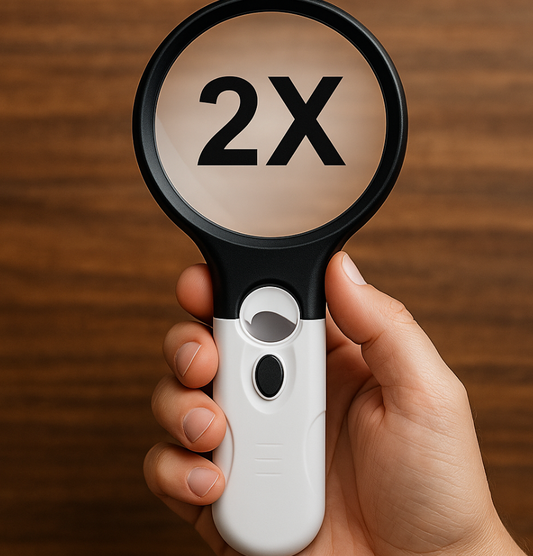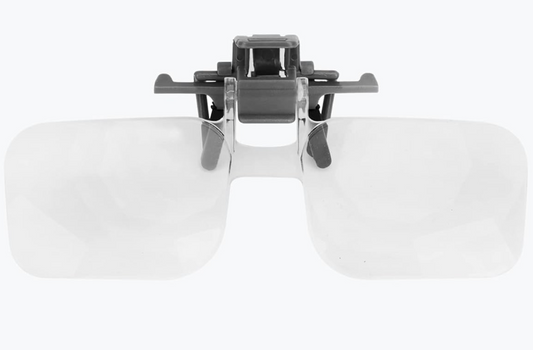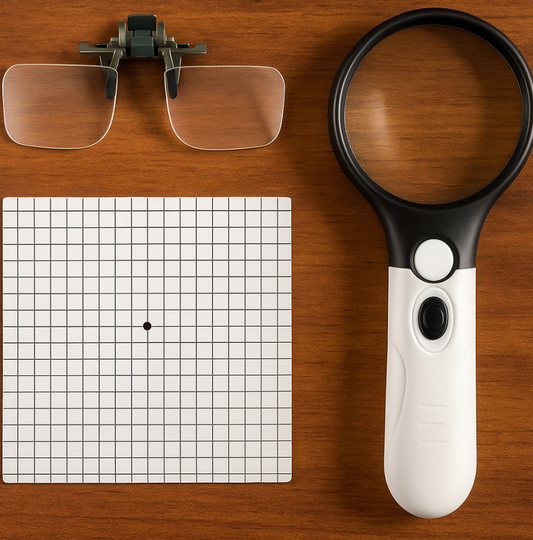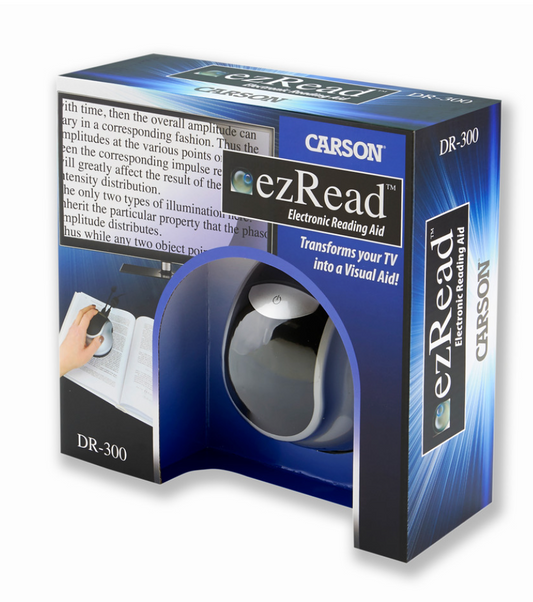Why Contrast Matters
Share
Why Contrast Matters for Patients with Low Vision
When it comes to understanding the challenges faced by individuals with low vision, particularly due to macular degeneration and cataracts, one often overlooked yet critical factor is contrast.
Contrast, or the difference in luminance or color that makes an object distinguishable from its background, plays a pivotal role in how we perceive the world.
For patients with visual impairments, contrast can significantly impact their quality of life, affecting everything from reading and mobility to independence and safety. Here, we delve into why contrast is so essential for these individuals and how improving it can make a difference.
Understanding the Impact of Low Vision
Macular Degeneration: Age-related macular degeneration (AMD) is one of the leading causes of vision loss among older adults. It primarily affects the central vision, which is crucial for activities like reading, recognizing faces, and driving. While peripheral vision often remains intact, the central vision becomes blurry, distorted, or dark, making it difficult to discern fine details.
Cataracts: Cataracts, another common age-related eye condition, occur when the eye’s lens becomes clouded. This condition scatters light entering the eye, resulting in hazy or blurred vision, reduced color vibrancy, and increased sensitivity to glare. Cataracts often reduce contrast sensitivity, making it hard to differentiate objects, especially in low-light or high-glare situations.
Why Contrast is Crucial
Enhancing Visual Clarity: For patients with macular degeneration or cataracts, contrast can mean the difference between seeing an object and missing it entirely. High-contrast environments—such as bold black text on a white background—make it easier to discern shapes, letters, and objects, even with compromised vision.
Supporting Safe Navigation: Low contrast in an environment can make everyday tasks hazardous. For instance, a stair edge blending into its background can lead to trips and falls. High-contrast markers on steps, doorways, and railings provide critical visual cues that improve spatial awareness and mobility.
Facilitating Reading and Communication: For individuals with low vision, reading standard text or handwriting can be extremely challenging. High-contrast materials, such as large-print books or digital screens with adjustable contrast settings, significantly enhance readability. This fosters better communication and enables people to stay engaged with written information, whether it’s a book, a recipe, or a letter from a loved one.
Improving Emotional Well-being: Struggling to see and interact with the environment can lead to frustration, social withdrawal, and depression. Enhancing contrast in everyday settings allows patients to engage more fully in activities they enjoy, fostering a sense of independence and boosting overall quality of life.
Practical Tips for Enhancing Contrast
Home Modifications:
- Use high-contrast color schemes for furniture, walls, and flooring. For example, avoid light-colored furniture on light carpets.
- Apply contrasting tape or paint to edges of stairs, countertops, and door frames.
- Choose dishes, utensils, and appliances that contrast with kitchen surfaces.
- For those who write - we are fans of our low vision notebook with deep bold lines and slightly larger spacing between the lines. It's 8x10 size also makes it great to have for taking notes around the house.
Assistive Tools:
- Invest in magnifiers or electronic readers that allow users to adjust contrast and brightness settings. Hands Free options are great for crafters, readers and those who may have mobility issues. This lightweight hands free LED magnifier provides a great solution to helping with everyday near work.
- Use task lighting to illuminate workspaces, especially for hobbies like sewing or reading.
- Opt for bold, high-contrast clocks telephones, and other household items.
Digital Solutions:
- Use devices with accessibility settings that can be changed, such as dark mode or high-contrast themes
- There are many screen readers and apps designed for individuals with low vision, which often enhance visual contrast automatically.
- Enlarging print can make a BIG difference as well!
- Check out How To Use Your Smartphone as a Low Vision Tool
Contrast isn’t just a visual feature—it’s a vital component of accessibility and inclusivity. For patients with macular degeneration and cataracts, improving contrast isn’t merely about seeing better; it’s about living better.



